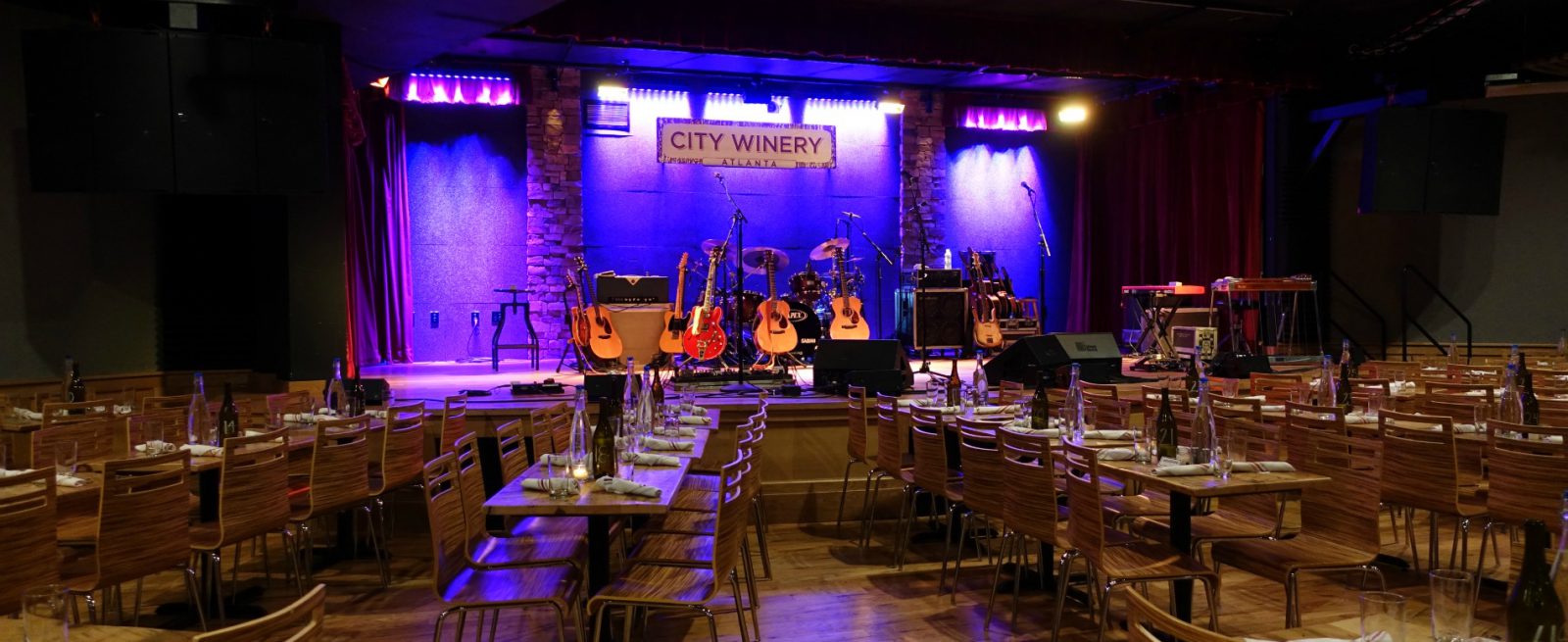Tech Talk: ‘Automation Enables Instant Control’
6 Min Read By MRM Staff
ELAN, from Core Brands, was recently selected to help redesign and renovate AV technology designed to enable seamless communication across many rooms for five City Winery locations. The producer of smart home entertainment and control systems designed to seamlessly combines music, TV, climate, lighting and other home systems with an easy-to-use interface that is accessible from anywhere in the home or anywhere in the world is working with Nashville-based technology integration firm Tour Supply Inc. to complete a holistic solution.
City Winery venues across the United States combine a fully functioning winery with intimate concerts, food and wine classes, fine dining, and more. The venues hosted 300 events in 2016. Technology integrator Lance Wascom of Tour Supply said ELAN serves as the venue’s “brain.”
“We absolutely love the new system’s ease-of-use,” said City Winery Vice President of Business and Venue Development Greg Kitowicz. “The instant control allows our staff to change the ambiance on-the-fly as needed. Particularly, having the Mobile App has been a game changer for all five of our facilities. It’s very convenient. It’s a one-stop-shop for total control, enabling you and your staff to improve the customer experience.”
In this edition of Tech Talk, Joe Lautner – Director, Business Development, Core Brands discusses AV technology, automation, restaurant audio and the importance of ambiance with Modern Restaurant Management (MRM) magazine.
What do restaurants and hospitality venues need to know about AV technology?
Running any business requires access to information from which management can make decisions to keep the operation running smoothly, safely, efficiently and profitably. Today’s sophisticated automation systems, upon which the best AV systems are based, can significantly streamline internal processes and enhance the customer experience for restaurants and other hospitality businesses. With a single touch, staffers can control climate and lighting, access security and video cameras, control music and video content and more. And the best systems can be automated with customized “events,” making facility management easier than ever.
Automation systems integrate with security and other subsystems for control and monitoring. A facility owner can check on the building’s security feed remotely; a manager can ensure that the refrigeration is at just the right temperature from anywhere in the facility; and a staffer can manage lighting to balance ambiance, safety and energy efficiency all with a tap on a mobile screen. The opportunities are significant, and they are already being implemented by innovative bars and restaurants across the country.

What is a common AV setup for a restaurant?
Video monitors are common in the bar or lounge area, generally less so in the dining areas. Modern entertainment and control systems integrate the video from an AVR and multiple audio sources with management from a single interface or app. A multi-zone audio system is essential in any restaurant with multiple rooms. That way, the system can play different volumes – and even different content – in the various rooms in the facility.
How does an AV system add to the ambiance?
The ambiance, largely determined by a restaurant’s audio, video and lighting, can make or break a customer’s restaurant experience. Good audio is a critical ‘atmosphere enhancer’ that establishes mood, aids in keeping conversations private, and provides the restaurant with its own unique identity. In a sports bar, the objective of the audio “atmosphere” is likely to be more upbeat and powerful. Automation systems can help to deliver good audio better than ever before. Plus, they integrate easy-to-manage control of video, lighting and security systems to enhance the overall experience for staff and customers alike.
Good audio is a critical ‘atmosphere enhancer.’
It’s no secret that bad audio is an irritant. If the audio is too loud, patrons must compete with sound to carry a conversation. If the audio too low, it depletes the energy of the space. Although it’s not the first factor that comes to mind when building a successful restaurant, well-designed audio is critical to establishing the experience an owner or manager seeks to create.
The automation system lets managers control the audio in any room, or section, of a restaurant, all from an app on a mobile device. If an establishment has a separate outdoor patio beer garden and an indoor dining space, they can create two or more experiences – through distinct “zones” – to separate unique atmospheres from one another. And with most high-end multi-room audio systems, they give the staff instant control over the establishment’s video, lighting, climate, security systems, and more.
For example, automation enables managers to control multiple devices at once. In the Five West Kitchen + Bar restaurant in Minneapolis, owner Ryan Brevig uses an ELAN Entertainment & Control System to alter the restaurant’s mood, energy and atmosphere at a moment’s notice to keep energy high, especially during game day commercial breaks. Brevig invested in a multi-room audio system, so that in between the University of Wisconsin’s football games, he can crank up the energy in the room with loud and engaging music. This control, says Brevig, keeps his patrons engaged despite the commercials playing on the television. The instant control offered by his multi-room audio system keeps excitement alive, and cultivates an atmosphere that keeps his customers engaged.
How does technology promote efficiency in hospitality?
Automation systems significantly streamline internal processes and enhance the customer experience. Automation enables instant control when needed in a variety of different circumstances. In a sports bar, staffers often must quickly respond to a customer’s request to “change the game” on one of the many screens in an establishment. Previously, to change the channel, or manipulate volume, restaurant staff had to point an IR remote at a television or source, shield the IR remote from bleeding or transmitting to another screen, and hope that it worked. With an automated system, the volume can be raised or lowered and the channel can be changed with a tap on a smartphone or tablet. Each television has its own setting within the app, so it’s as simple as a finger swipe. Gone are the days when the staff has to finagle with technology; now they can focus on what matters and leave the logistics up to an automated system.
The restaurant table will always start with the customer experience.
Automation systems are multi-functional which naturally increases efficiency. For example, the Crack Shack restaurant in San Diego uses an automated control system to remotely manage its security system. If motion is detected after the restaurant closes, a notification is sent from an installed security panel, and a series of events is autonomously triggered. First, the security lights are turned on, then audio is played through the speakers warning intruders that the restaurant is a private space and that security has been dispatched. Next, the system sends an email out to the security company, who can access the video cameras to see if someone is actually on the premises. If it is something that requires action, the company can dispatch personnel to the venue to handle the issue.
What trends are you seeing from diners in what they expect from technology at restaurants?
Everyone is aware of how much can be controlled or accessed from a smart phone. As diners become more familiar with home automation, they begin to expect the same simplicity and flexibility in the restaurants they frequent. Thus, a request such as “can you turn the music up” is not expected to be met with a “maybe, let me see” answer.
What are the advantages of increasing technology use in the hospitality industry?
In addition to increasing workflow efficiency, automation benefits the customer experience as well. Remote and instantaneous control are very useful for bars that host tours and events, or have designated dining spaces. Automation helps staff to keep customers happy – they can satisfy requests to change a song, lower the volume or raise the temperature instantly from the smartphones in their pockets.
How tech savvy do restaurant owners and operators need to be?
Today’s generation of automation systems are intuitive and user-friendly, so it is not necessary for restaurant owners to be especially “tech-savvy” to use them. Once a dedicated technology integrator configures the system, control is as easy as tapping on a button.
High-end automation systems enable the configuration of “events” that simplify commands further. For example, a “party” mode can be customized to include the automatic increase of the audio volume and the automatic dim of the lights. Or, managers can automate this event to happen at a certain day and time without the need to lift a finger. Any event can be customized for a restaurant manager’s use.
How are fears allayed regarding technology taking away from hospitality?
Generally, hospitality managers quickly see the benefits of technology to enhance the guest experience. But if there is any hesitation, the system integrator can share examples using the app on his or her phone. Once the manager sees a simple-to-use interface make a task that currently is more challenging – think of the changing-the-channel example in the sports bar – any fear will dissipate.
What do you envision the restaurant table of the future looking like?
The restaurant table will always start with the customer experience. In many cases, the best experience is one where the technology is invisible to the guest, even as requests are quickly enabled by that technology.
In what ways can independent restaurants, who might have less resources, use technology to their advantage?
It’s essential to prioritize what delivers the best guest experience, and important to see where technology can free up resources to focus on the guests. Just like the right accounting package can help management spend less time on the books, simple automation technology can help save time on routine actions, leaving more time to focus on the guest experience.

